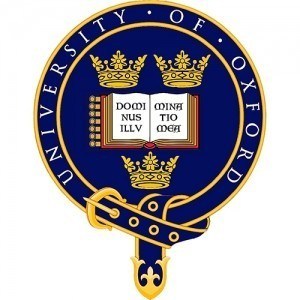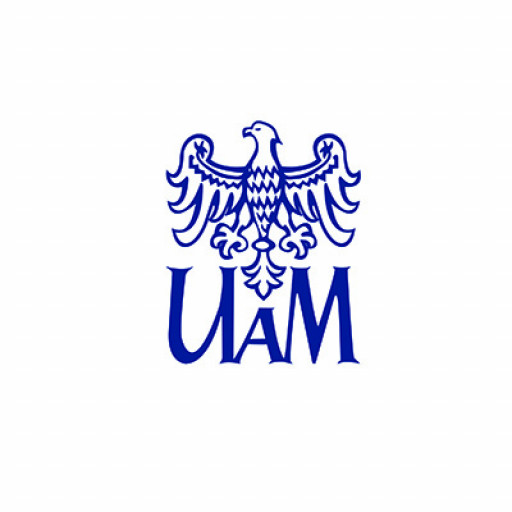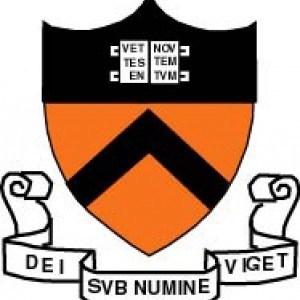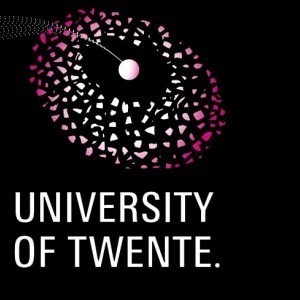Photos of university / #oxford_uni
The Doctoral Programme in Technology of Fusion Energy at the University of Oxford offers an exceptional opportunity for students to engage in cutting-edge research and advanced study in the field of nuclear fusion technology. Designed for aspiring researchers and professionals aiming to contribute to the development of sustainable and clean energy sources, this programme provides a comprehensive curriculum that combines theoretical foundations with practical application. Students will investigate the fundamental physics of plasma behaviour, magnetic confinement systems, and innovative reactor designs, equipping them with both the scientific knowledge and engineering skills necessary to address the challenges of fusion energy production. Through rigorous coursework, laboratory experiments, and collaborative projects with leading institutions, candidates will gain expertise in plasma diagnostics, materials science, and simulation techniques. The programme emphasizes interdisciplinary approaches, integrating physics, engineering, and computational methods to foster innovative solutions for fusion reactors. Participants will have access to state-of-the-art facilities, including tokamaks and other plasma devices, supported by world-renowned faculty members who are at the forefront of fusion research. The programme also encourages the development of professional skills, including research ethics, project management, and scientific communication, preparing graduates for careers in academia, industry, or government agencies involved in energy policy and infrastructure. Students will benefit from Oxford’s extensive research network and its collaborations with international fusion research centers, ensuring exposure to the latest advancements and global initiatives in fusion energy. Graduates of this programme will be well-equipped to contribute significantly to the advancement of fusion technology, helping to shape the future of clean, sustainable energy worldwide.
The Fusion CDT provides training from world-leading experts in a range of fusion-relevant disciplines: materials science, plasma physics, nuclear physics, technology, laser physics, instrumentation, etc. It will train at least 77 PhD students in disciplines related to fusion energy over five intakes from 2014 to 2018 and for each year a significant number of fully-funded four-year PhD studentships will be available.
Other than the times when you are taking courses as part of the Fusion CDT cohort, students following the Oxford Science and Technology of Fusion Energy EPSRC Centre for Doctoral Training programme work, train and study alongside students undertaking the DPhil in Materials, together forming an Oxford cohort of research students in materials.
You will have access to a range of fusion energy facilities across the UK, including the Central Laser Facility at the Rutherford Appleton Laboratory, the MAST and JET tokamaks at Culham in Oxfordshire, advanced materials research facilities, the Orion laser and high performance computing facilities. International links provide access to many other fusion devices around the world.
The combination of world-leading experts and world-class facilities creates an outstanding training environment for the next generation of fusion scientists - the generation who may exploit ITER, NIF and other international experiments to make fusion energy a reality.
As a student on the Oxford DPhil in Science and Technology of Fusion Energy (EPSRC CDT) programme you will be part of one of the top-ranked materials departments in the world. The vibrant research school consists of around 28 academic staff, 13 Senior Research Fellows, and around 180 research students and 86 post-doctoral researchers. The department's research students are of many nationalities and come from diverse backgrounds, both graduates in the traditional subjects of materials science, physics, chemistry and engineering and also in mathematics, earth sciences and biology.
The programme is normally carried out in four years of full-time study under the supervision of an experienced member of staff. It is examined at the end of the programme by means of a written thesis and an oral examination. A wide range of exciting DPhil projects is available. The first eighteen months is a probationary period during which you undertake various taught courses specific to the Fusion CDT cohort, soon after which, subject to satisfactory progress, students normally transfer to full DPhil status. A second formal assessment of progress takes place later in the programme, normally early in the fourth year. Details of the DPhil programme, including training opportunities (academic courses, research-specific skills and generic transferable career skills) and progression requirements, can be found in the graduate course handbook.
Research interests in the department extend over most branches of materials science, as well as some aspects of solid state physics and chemistry. These include the study of a wide range of materials of relevance in advanced technological applications, including metals and alloys, composites, semi- and super-conductors, polymers, biomaterials, ceramics and materials for quantum information processing.
Much of the research is carried out in close collaboration with industry. World-leading research takes place on:
- the characterisation of materials, where there is emphasis on electron microscopy and related techniques
- processing and manufacturing of materials
- modelling of materials, where there is attention to both structures and processes
- properties of materials
- energy materials, including those for batteries, nuclear fusion and photovoltaics
- quantum information processing, which includes groups working on experimental studies, theory and modelling.
Fusion materials research at the University of Oxford
The plasma-facing components and breeding blanket of any future fusion tokamak will be subjected to one of the most extreme engineering environments possible. Materials will experience temperatures of up to 1200C in steady state and 3300C in transient events, and irradiation with 14MeV neutrons, causing displacement damage, transmutation giving rise to compositional changes, and internal H and He generation, plasma facing surfaces also can have high erosion rates due to interactions with the fusion plasma. Ideally, the materials should not retain tritium or themselves transmute to long-lived radioactive isotopes. For fusion to be feasible as an economic power source, the materials must be able to survive these conditions, retaining usable thermal and mechanical properties, for five years or more.
Materials of current interest include special “reduced activation” steels, tungsten alloys and composites, molybdenum alloys, copper alloys and silicon carbide.
The University offers a range of projects, both experimental and modelling, on the processing, joining, microstructure, mechanical properties, and resistance to radiation damage of these materials.
Projects will use a range of specialised research techniques, usually in combination:
- advanced processing, coating and joining methods (mechanical alloying, rapid solidification, spray forming, additive manufacture, friction-stir welding)
- irradiation of materials by high-energy ion-beams, protons and neutrons.
- electron microscopy of microstructures, and radiation damage effects, including in-situ irradiations, and field-ion microscopy of radiation damage
- microanalysis by atom-probe tomography and electron-optical methods
- X-ray diffraction including use of the diamond light source mechanical testing, including micromechanics, over a wide temperature range
- computer modelling of radiation damage effects, deformation and microstructural development.
Many projects are carried out in close collaboration with the Culham Centre for Fusion Energy; in the course of projects starting in 2014 and thereafter, the CDT is expected to make use of the newly-commissioned hot cells at the Materials Research Facility at Culham Centre for Fusion Energy.
Applicants are normally expected to be predicted or have achieved a first-class or strong upper second-class undergraduate degree with honours (or equivalent international qualifications), as a minimum, in a suitable science subject; normally this subject would be one of materials science, chemistry, physics or mathematics, but could include other subjects depending on the area of research chosen.
For candidates offering a UK bachelor's degree or UK integrated undergraduate master's degree normally we require an overall grade of at least 65%. As examples of international equivalents to this requirement: for the US system we normally regard a GPA of 3.6 out of 4.0 on a four-year bachelor's programme as equivalent and for the Chinese system we normally regard an overall degree mark of 85% on a four-year bachelor's degree programme as equivalent.
In some countries at least some of the bachelor's degrees are not acceptable for direct progression to a PhD in that country; normally such degrees are not acceptable for entry to this programme unless the candidate also holds or expects to achieve a master's degree with an overall mark equivalent to at least 65% in a UK taught master's degree.
Normally the required qualification(s) must be achieved by the date of commencement of the research programme for which you have applied.
If you hold non-UK qualifications and wish to check how your qualifications match these requirements, you can contact the National Recognition Information Centre for the United Kingdom (UK NARIC).
No Graduate Record Examination (GRE) or GMAT scores are sought.
- Official transcript(s)
- CV/résumé
- Statement of purpose/personal statement:400 words, accompanied by a list of preferred projects and supervisors
- References/letters of recommendation:Three overall, generally academic
ENGLISH LANGUAGE REQUIREMENTS
Higher level
|
Test |
Standard level scores |
Higher level scores |
||
|
IELTS Academic |
7.0 | Minimum 6.5 per component | 7.5 | Minimum 7.0 per component |
|
TOEFL iBT |
100 |
Minimum component scores:
|
110 |
Minimum component scores:
|
| Cambridge Certificate of Proficiency in English (CPE) | 185 |
Minimum 176 per component |
191 |
Minimum 185 per component |
| Cambridge Certificate of Advanced English (CAE) | 185 |
Minimum 176 per component |
191 |
Minimum 185 per component |
The University of Oxford offers a comprehensive range of financing options for students enrolled in the MSc in Technology of Fusion Energy program. Prospective students are encouraged to explore various funding sources to support their studies, including scholarships, bursaries, and grants. Oxford provides several prestigious scholarships specifically aimed at students pursuing advanced degrees in science and engineering disciplines, which may include the Fusion Energy program depending on eligibility criteria. Additionally, international students can apply for government-sponsored scholarships, such as the Chevening Scholarships or those from their home countries, which recognize academic excellence and leadership potential.
The university also offers a range of departmental funding opportunities, including fee waivers and research grants, which may be available for outstanding applicants pursuing research-intensive programs like the MSc. Students are advised to check the university's official scholarship database and the Department of Physics' funding pages for detailed information on available awards, application procedures, and deadlines. Furthermore, the university participates in financial aid schemes designed to assist students with tuition fees and living expenses, especially for those from underrepresented or financially disadvantaged backgrounds.
Apart from internal funding options, students can explore external funding sources, such as industry sponsorships or research council grants, which support students engaged in fusion energy research or related fields. Many programs also offer part-time work opportunities on campus, which can help students offset living costs while gaining valuable experience. It is important to note that funding availability and eligibility criteria may vary annually and depending on the student's nationality and personal circumstances. Therefore, prospective applicants are advised to start their funding search early and utilize the university’s dedicated financial aid services for personalized advice and support. Overall, financing studies at Oxford requires proactive planning, thorough research of available options, and timely application submissions to maximize the chances of securing suitable funding.
The MSc in Technology of Fusion Energy at the University of Oxford is a specialized postgraduate program designed to provide students with a comprehensive understanding of the scientific principles and technological challenges associated with nuclear fusion as a potential source of sustainable energy. This program integrates fundamental physics, engineering, and advanced technological concepts to prepare graduates for careers in research, development, and industry related to fusion energy. Students gain in-depth knowledge of plasma physics, magnetohydrodynamics, thermodynamics, and materials science, which are crucial for the development and operation of fusion devices such as tokamaks and stellarators. The curriculum emphasizes both theoretical understanding and practical skills, often involving laboratory work, computer modeling, and simulation projects. The program aims to foster innovation, critical thinking, and problem-solving abilities that are essential for tackling the complexities of harnessing fusion power. Oxford’s research centers and collaborations with national and international fusion facilities provide students with unique opportunities to engage with cutting-edge research, gain hands-on experience, and contribute to advancements in this promising field. Graduates of this program are well-positioned to work in academia, government research agencies, or private sector enterprises focused on fusion technology, renewable energy, and sustainable development. The program typically lasts one year full-time and may include options for part-time study, catering to a diverse range of students from various academic and professional backgrounds. As a part of Oxford’s broader focus on science and engineering excellence, students receive education from world-renowned faculty members, participate in seminars, workshops, and possibly internships, and become part of a vibrant scientific community dedicated to energy innovation. Overall, the MSc in Technology of Fusion Energy offers rigorous training, extensive research opportunities, and a strong foundation for those seeking to contribute to the future of clean, virtually limitless energy through nuclear fusion.








